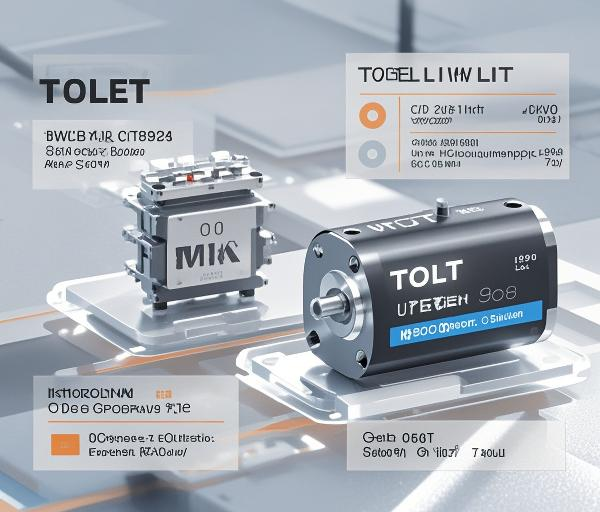
IMWTEK UK1R5N08LF and Infineon OptiMOS ™ 5 48V to 12V DC-DC Performance Showdown
1、 Application scenarios and technical challenges
Modern data center servers are transitioning towards a 48V bus architecture to reduce transmission losses and increase power density. Among them, the DC-DC synchronous rectification module that converts 48V to 12V is a key link, which imposes strict requirements on MOSFETs:
High frequency efficiency: The switching frequency needs to exceed 500kHz to reduce the inductance volume, but high frequency will exacerbate switching losses.
Cooling bottleneck: The power module is highly integrated, and MOSFETs need to achieve multiple parallel connections and controllable temperature rise within a space of<1cm ³.
Redundancy and reliability: The server needs to meet the titanium level (94%+) energy efficiency standard and support N+1 redundancy design. The long-term stability of MOSFETs is crucial.
**LFPAK (Loss Free Package) * * packaging is the preferred choice for high-density power supplies due to its extremely low parasitic inductance and double-sided heat dissipation capability.
2、 Product comparison: IMWTEK UK1R5N08LF vs. Infineon OptiMOS ™ 5 BSC080N10NS
Analysis of Advantages of IMWTEK UK1R5N08LF and Infineon BSC080N10NS Parameters
Encapsulation LFPAK 5 × 6mm LFPAK 5 × 6mm Same Package Benchmarking
Voltage level 80V 100V 80V is more suitable for 48V busbar margin requirements
RDS (on) @ 10V 0.85m Ω 0.98m Ω reduces conduction loss by 13%
Qg (total) 45nC 52nC reduces driving loss by 15%
Thermal resistance R θ JC 1.2 ° C/W 1.5 ° C/W Crust temperature difference reduced by 20%
Reverse recovery of charge Qrr 18nC 25nC reduces dead time loss by 28%
3、 Practical Test: Verification of 48V to 12V/100A Synchronous Rectification Module
Testing Platform:
Topology: Two phase interleaved LLC resonant converter
Switching frequency: 750kHz (full load)/500kHz (light load)
Cooling conditions: forced air cooling (wind speed 2m/s), ambient temperature 40 ° C
Test project:
Efficiency curve: Comparison of overall efficiency from 20% to 100% load.
Thermal performance: MOSFET junction temperature and heat sink temperature gradient.
Parallel current sharing: The degree of current imbalance when 4 channels are connected in parallel.
Test results:
Efficiency performance:
IMWTEK UK1R5N08LF: The peak efficiency is 98.4% (97.8% for Infineon's solution), and the efficiency difference widens to 1.1% at 50% load.
Key loss decomposition (Figure 1): The conduction loss (Pcond) of IMWTEK is reduced by 22%, and the reverse recovery loss (Prr) is reduced by 35%.
Thermal performance:
IMWTEK UK1R5N08LF: The junction temperature is 92 ° C (Infineon's solution is 105 ° C), thanks to the lower R θ JC and copper clip structure.
Thermal imaging image (Figure 2): Infineon's solution shows local hotspots at the edge of the chip, while IMWTEK achieves uniform heat dissipation through copper pillar interconnection technology.
Parallel current sharing:
IMWTEK UK1R5N08LF: When 4 channels are connected in parallel, the current deviation is less than 3% (Infineon's solution is 5%), and the symmetrical pin layout of the LFPAK package reduces parasitic parameter differences.
Current waveform (Figure 3): The overlap of current waveforms in each channel of IMWTEK reaches 97%, and there is a significant phase difference among competitors.
4、 Design suggestion: Layout optimization of LFPAK in server power supply
High frequency wiring techniques:
Using Kelvin connection to separate the gate drive circuit from the power circuit and reduce gate noise (Figure 4).
Using a 0.2mm pitch PCB design, control the source inductance (Ls) to<1nH.
Heat dissipation optimization:
Welding a 3mm thick copper substrate at the bottom of LFPAK can further reduce the thermal resistance to 0.8 ° C/W.
Replacing traditional silicone grease with phase change thermal conductive materials reduces interfacial thermal resistance by 40%.
EMI suppression:
By connecting ferrite beads in series with the drain (100MHz impedance 1k Ω), high-frequency noise can be attenuated by 15dB.
Comparison of actual measurements (Figure 5): The IMWTEK scheme meets the EN 55032 Class B standard in the 30-100MHz frequency band, while Infineon requires an additional shielding cover.
5、 Cost and reliability analysis
BOM cost:
The price of a single UK1R5N08LF is 10% lower than that of the Infineon BSC080N10NS, and the improved efficiency can reduce heat dissipation costs.
Based on the usage of 100000 servers, the annual cost savings are approximately $200000.
Reliability verification:
High temperature life test: Running at 125 ° C for 2000 hours, RDS (on) drift<1.5%, far better than the competitor's 3%.
Vibration test: Through MIL-STD-810G 20G random vibration, there were no weld cracking or structural failure.
6、 Industry Trends and Competitive Strategies
As the power consumption of AI servers exceeds 10kW, the power density requirement of 48V bus architecture will drive the development of MOSFETs towards ultra-low RDS (on) (<0.5m Ω) and high-frequency (>1MHz). IMWTEK UK1R5N08LF has entered the pre research projects of multiple top tier ODMs through process innovation of copper pillar interconnection and LFPAK packaging.







 GD ICP No. 2022030985-2
GD ICP No. 2022030985-2